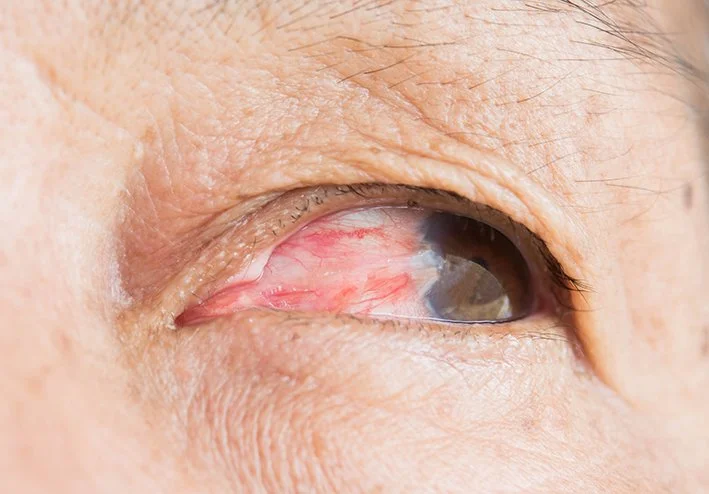
Pterygium Surgery
WHAT IS A PTERYGIUM?
A pterygium is a wing of skin that grows on the surface of the eye. It grows from the white part (the conjunctiva) onto the central clear part that appears coloured (the cornea). It usually comes from the nose side, but occasionally comes from the outside. Pterygia usually appear in patients in their twenties or thirties. It may then stay the same for many years or it may grow slowly. Pterygium is not a type of cancer.
WHY DOES PTERYGIUM MATTER?
Many patients with pterygium are not bothered by it, particularly if it is small and stable for many years. However, for some patients it may become red and sore at times causing irritation. For others it can have a poor appearance. If the pterygium is growing towards the centre of the eye it can start to change the shape of the eye which can blur the vision. In the worst cases and very rarely, a pterygium can grow over the line of sight.
HOW CAN I PREVENT PTERYGIUM OR STOP IT GETTING WORSE?
The main risk factor for pterygium is ultraviolet exposure. Wrap-around sunglasses with a good fit are important. When buying sunglasses look for those with a high UV protection rating and check they are compliant with Australian Standards. “Fashion” type sunglasses without a UV rating are not suitable for protecting your eyes in the harsh Australian climate.
HOW IS PTERYGIUM TREATED?
As a specialist corneal surgeon, Dr Gunn is specially trained in the management of primary and recurrent pterygium. If the pterygium is small but irritating, Dr Gunn may try a course of eye drops to improve symptoms. Many cases will need surgical treatment however. The aim of surgery is to give a great cosmetic outcome and have a low rate of the pterygium returning. If the pterygium is simply removed, there is a high likelihood of it regrowing. To prevent this, wide removal of a layer called “Tenons” is preformed and the removal site is covered with a graft of conjunctiva taken from a different part of your eye (usually under the top eyelid).
HOW PAINFUL IS PTERYGIUM SURGERY?
The operation itself is painless though you may be a little sore for a few days. A specialist anaesthetist will be present during surgery to make you extremely comfortable and relaxed. Dr Gunn uses a tissue glue technique to attach the graft without any of the stiches that are traditionally used. The lack of stitches has been a “game changer” in pterygium surgery and means your recovery after the procedure will be much less painful and more rapid. Dr Gunn operates on a Thursday and you should be able to return to work on the following Monday. If you work in a dusty or dirty environment it would be wise to take 1-2 weeks off work. During the recovery your eye will often still look red for a month or two and so it is a good idea to schedule the surgery well away from life events such as graduations and weddings.
WHAT WILL I NEED TO DO AFTER PTERYGIUM SURGERY?
You will have postoperative appointments to attend. Antibiotic eye drops will be used for 2 weeks and steroid eye drops will be used for 2 months. These drops are important to help give a great cosmetic outcome and prevent recurrence.
HOW MUCH DOES PTERYGIUM SURGERY COST IN BRISBANE?
Pterygium surgery is covered Bronze level hospital cover and above. Insurance will partially cover the cost of Dr Gunn and the anaesthetist. There is no gap on the hospital and the cost of glue is included though you may have a hospital excess to pay. If you only have basic hospital cover or are uninsured, Dr Gunn offers surgery at the South Bank Day Hospital at very reasonable rates. When you see Dr Gunn for your assessment you will be given a quote for the out of pocket costs for surgery.



